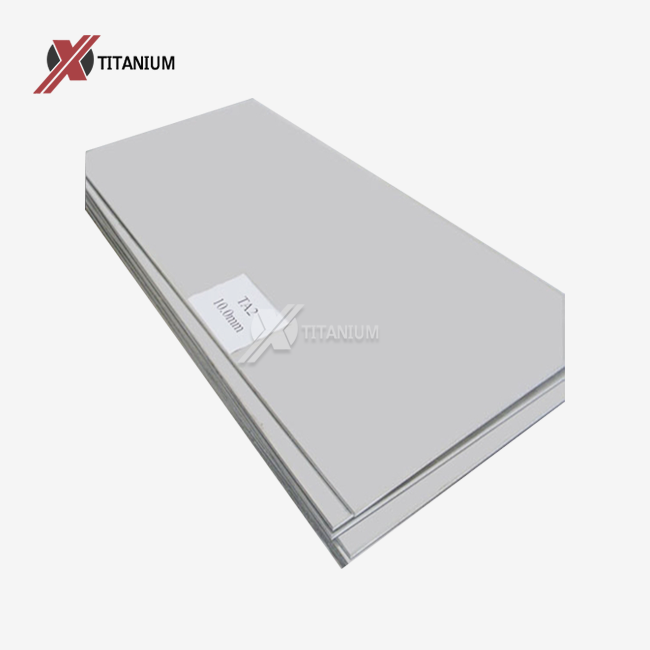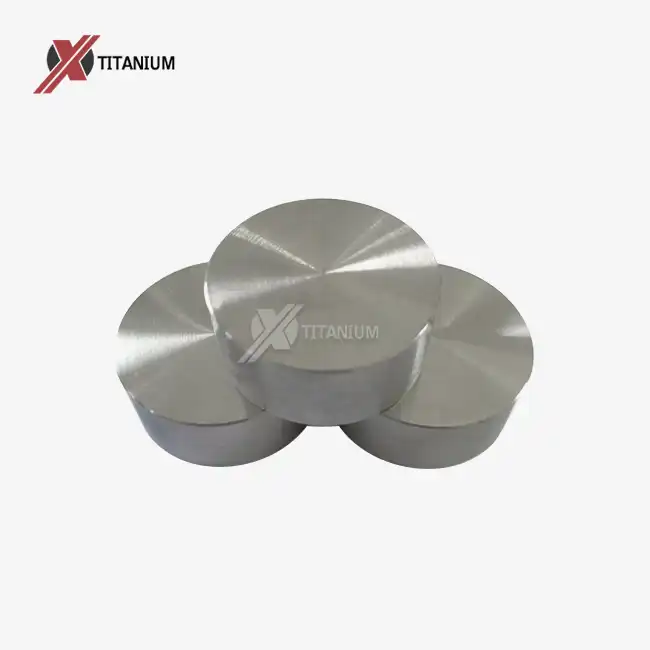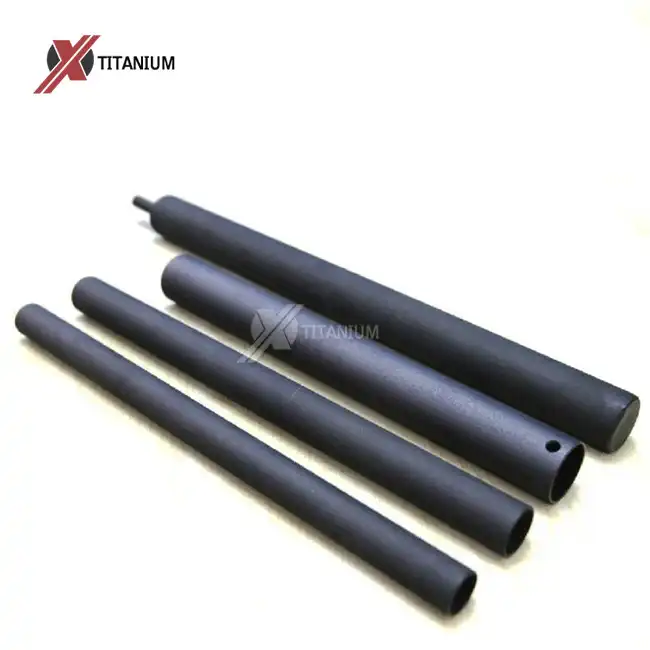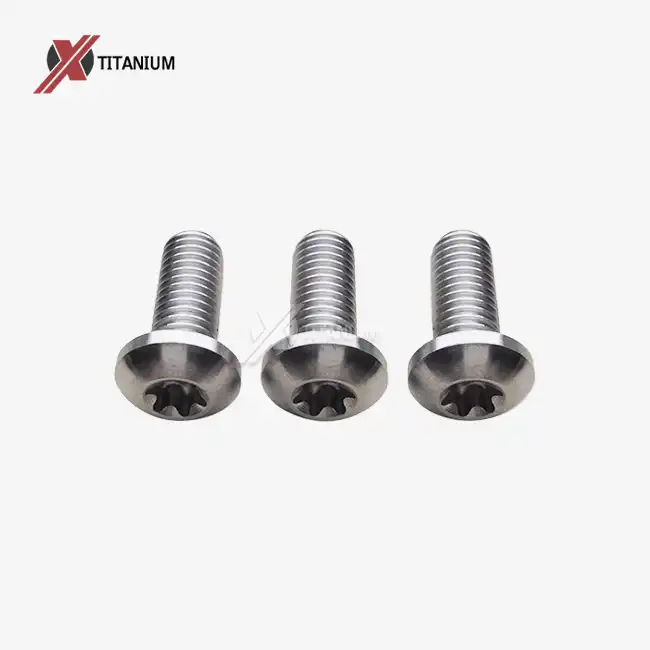The Unique Properties of Pure Titanium Plate
Strength and Lightweight Nature
Pure titanium plate boasts an impressive strength-to-weight ratio, making it a premier choice for applications where both durability and weight reduction are critical. This attribute is particularly valuable in aerospace engineering, where every gram matters. The density of pure titanium is approximately 4.51 g/cm³, which is significantly lower than that of steel, yet it maintains comparable strength. This combination allows for the construction of robust aircraft components that don't compromise on performance or fuel efficiency.
Corrosion Resistance
One of the most celebrated properties of pure titanium plate is its exceptional resistance to corrosion. This resistance stems from the formation of a thin, protective oxide layer on the surface when exposed to air or moisture. This natural barrier shields the metal from chemical attacks, making it ideal for use in harsh environments such as marine applications or chemical processing plants. The corrosion resistance of pure titanium plate extends its lifespan and reduces maintenance costs, making it a cost-effective choice in the long run.
Biocompatibility
The human body's acceptance of pure titanium is remarkable, positioning it as a cornerstone material in medical implants and devices. Its biocompatibility stems from its resistance to bodily fluids, non-toxicity, and ability to osseointegrate—effectively bonding with bone. This property has revolutionized the field of orthopedics and dental implantology. Pure titanium plates are used in craniofacial reconstruction, joint replacements, and even in the fabrication of customized prosthetics, significantly improving patient outcomes and quality of life.
Applications Across Industries
Aerospace and Defense
In the aerospace sector, pure titanium plate is a crucial component in the construction of aircraft frames, engine parts, and hydraulic systems. Its high strength-to-weight ratio allows for the design of lighter aircraft without compromising structural integrity. This translates to improved fuel efficiency and increased payload capacity. Military applications leverage pure titanium plate in armor plating and missile components, where its durability and resistance to extreme conditions are invaluable.
Medical and Biomedical Engineering
The medical field extensively utilizes pure titanium plate in various applications. From surgical instruments to implantable devices like pacemakers and artificial joints, titanium's biocompatibility ensures these critical components perform reliably within the human body. Titanium mesh plates are used in cranioplasty procedures, providing a strong, lightweight solution for skull reconstruction. The material's ability to be shaped and customized allows for patient-specific implants, improving surgical outcomes and recovery times.
Chemical and Energy Industries
In chemical processing plants and energy production facilities, pure titanium plate finds extensive use due to its corrosion resistance. It's employed in the construction of heat exchangers, reaction vessels, and piping systems that handle corrosive substances. The nuclear power industry relies on titanium for its resistance to radiation damage and its strength at high temperatures. In desalination plants, titanium plates are crucial components in systems that convert seawater to freshwater, withstanding the corrosive effects of saltwater over extended periods.
Manufacturing and Quality Control
Production Techniques
The production of pure titanium plate involves sophisticated metallurgical processes. Cold rolling, hot rolling, and annealing are common techniques used to achieve the desired thickness and mechanical properties. The choice of method depends on the intended application and the specific grade of titanium being produced. Cold rolling, for instance, can increase the strength of the plate, while annealing helps to relieve internal stresses and improve ductility.
Surface Treatments
Surface finish plays a crucial role in the performance of pure titanium plate. Various treatments such as polishing, pickling, and sandblasting are employed to achieve specific surface characteristics. A bright, polished finish might be preferred for aesthetic applications or to minimize bacterial adhesion in medical devices. Acid cleaning and passivation treatments enhance the natural oxide layer, further improving corrosion resistance.
Quality Assurance
Rigorous quality control measures are essential in the production of pure titanium plate. Manufacturers conduct a battery of tests to ensure compliance with international standards such as ASTM B265-15 and ISO 5832-2:2007. These tests include hardness measurements, tensile strength evaluations, and chemical composition analyses. Additionally, non-destructive testing methods like ultrasonic inspection are used to detect any internal flaws or inconsistencies in the material.
Conclusion
Pure titanium plate stands as a testament to the ingenuity of materials science, offering a unique combination of strength, lightness, and versatility. Its applications span from the heights of aerospace technology to the intricate world of medical implants, showcasing its indispensable role in advancing various industries. The exceptional properties of pure titanium plate, including its corrosion resistance, biocompatibility, and durability, continue to open new avenues for innovation and improvement in fields ranging from chemical processing to renewable energy. As research and manufacturing techniques evolve, the potential applications for this remarkable material are bound to expand, promising exciting developments in technology and healthcare.
Looking to harness the power of pure titanium plate for your next project? Baoji Chuanglian New Metal Material Co., Ltd. specializes in high-quality titanium products tailored to your specific needs. With over a decade of experience, we deliver premium pure titanium plate solutions for aerospace, medical, and industrial applications. Contact us today at info@cltifastener.com or djy6580@aliyun.com to discuss how our expertise can elevate your project to new heights.
FAQs
What makes pure titanium plate ideal for aerospace applications?
Its high strength-to-weight ratio allows for lighter aircraft components without sacrificing structural integrity, improving fuel efficiency and performance.
How does pure titanium plate contribute to medical advancements?
Its biocompatibility and corrosion resistance make it perfect for implants and medical devices, reducing rejection risks and improving patient outcomes.
Can pure titanium plate be customized for specific industrial needs?
Yes, manufacturers offer customization in size, thickness, and surface finish to meet unique project requirements across various industries.




